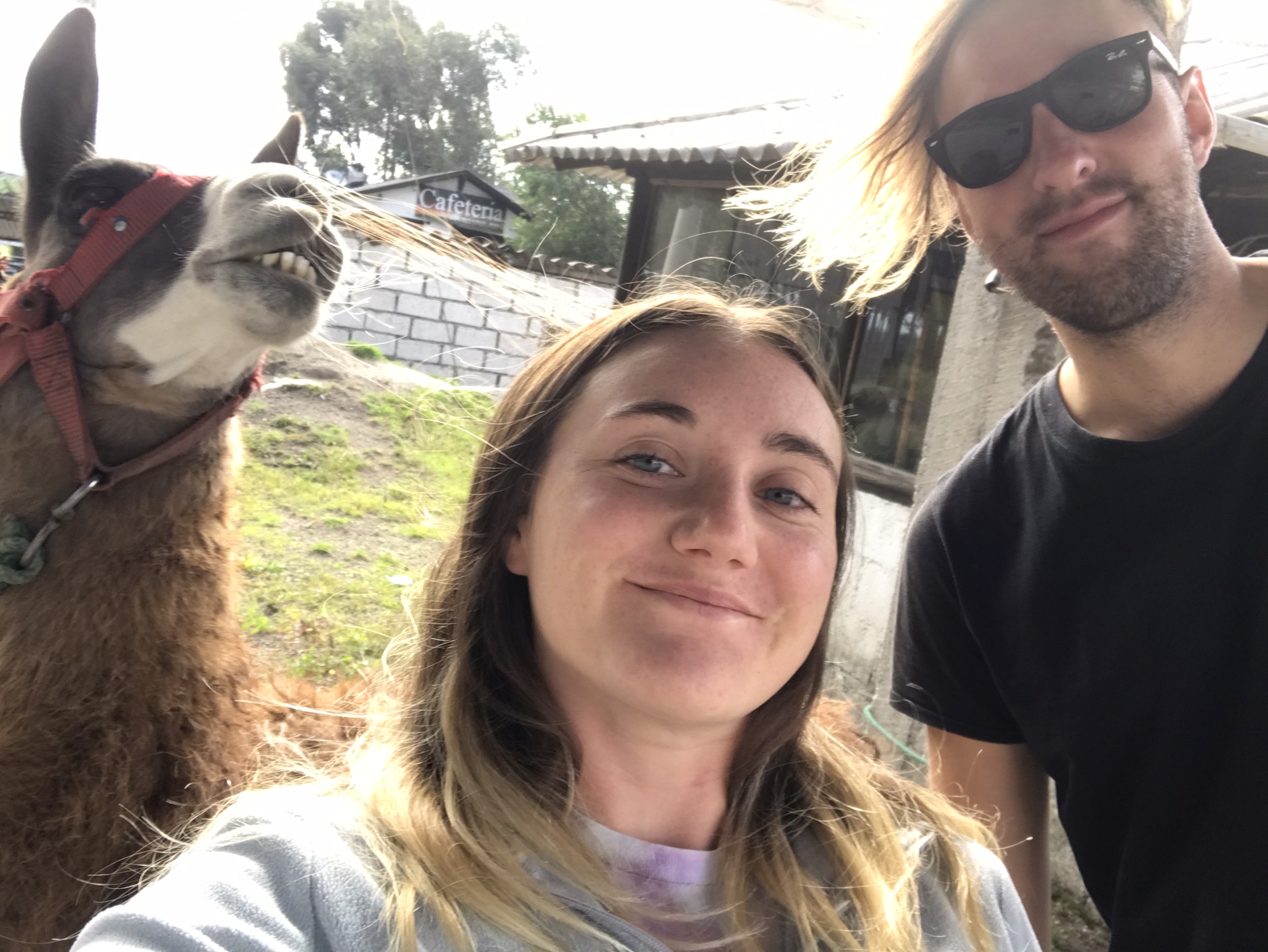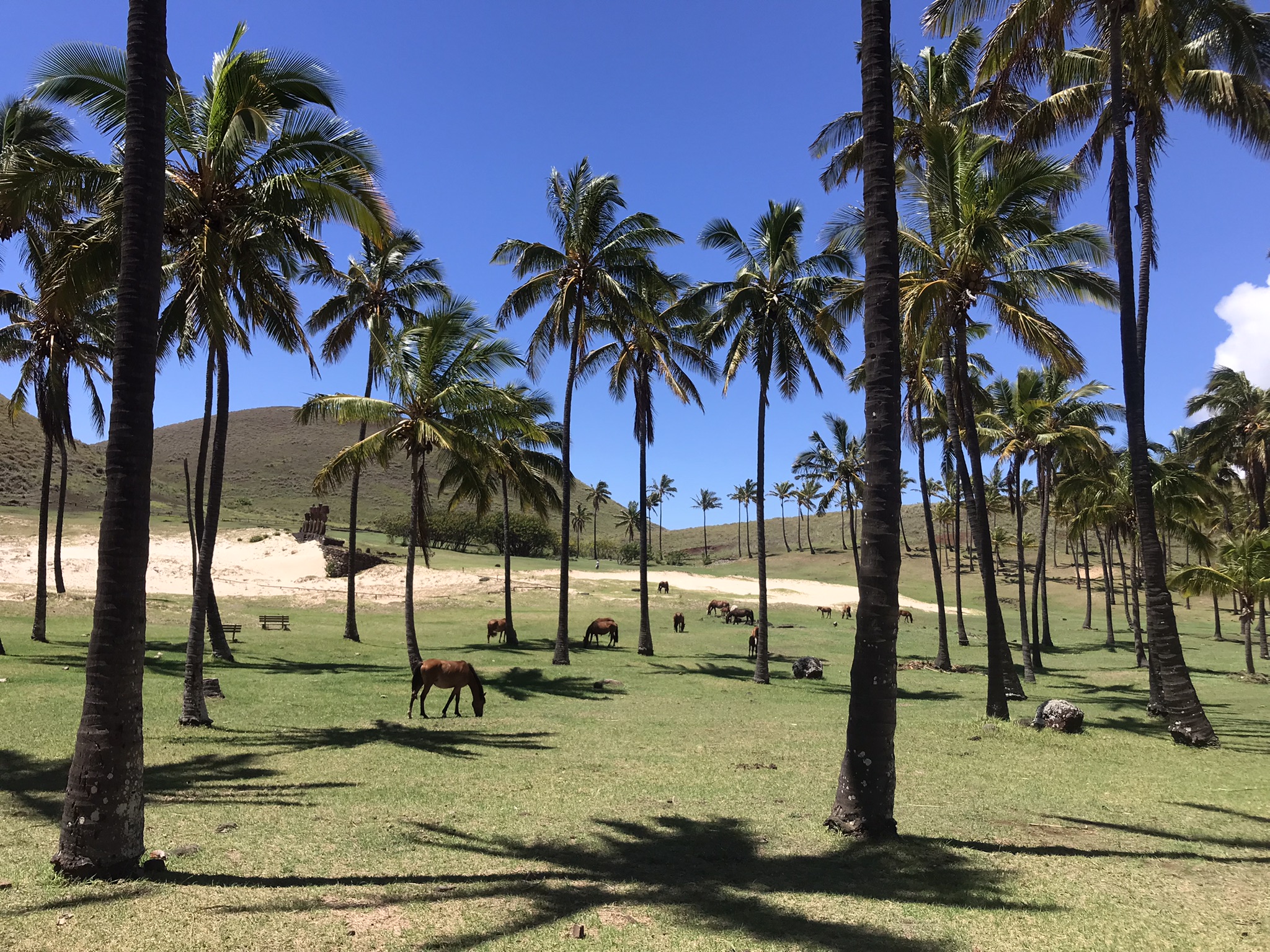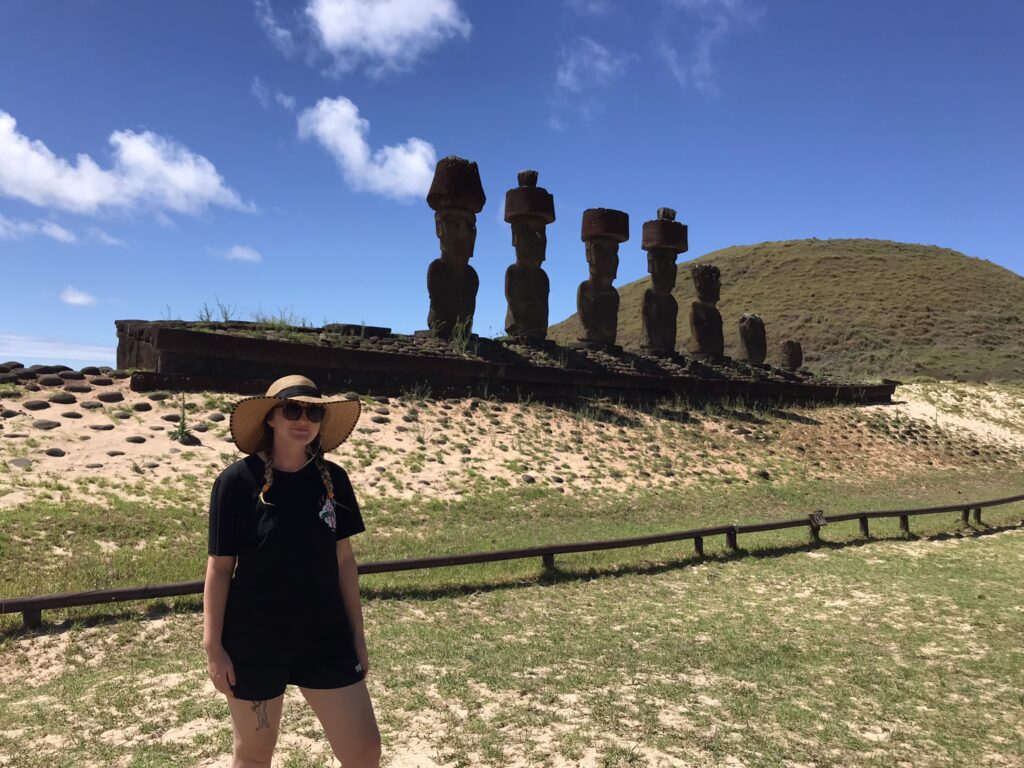
Easter Island can be an expensive place to visit however you can save pennies by cutting your trip from the traditional 7 days to 5 days instead. We packed everything into 5 days easily without breaking the bank, it just takes a little forward thinking and planning to cram all the following activities in. Check out our Easter Island independent travel itinerary below!
Day 1: Introductory walk around Hanga Roa:
First walk down to the main street in Hanga Roa, Atamu Tekena, and have a mosey around. Next, head to Pea Swimming Pool for the beautiful views over the bay. Make sure to look down at the water, you may even spot some turtles. Continue walking along the seafront to the Harbour and marvel at the moai right next to the harbor. If you’re itching to get in the sea, you can take a dip at Playa Poko Poko. Next head along the coastal path past the cemetery to Ahu Tahai, this is a great place to visit at sunrise or sunset. Crowds gather to watch the sun slowly setting over this moai. We were especially lucky to witness horses galloping around at sunset alongside the moai. If you walk on slightly further, you can visit Mirador Hanga Kioe, which is less busy than Ahu Tahai but I believe it’s on private land so you can only look from afar.
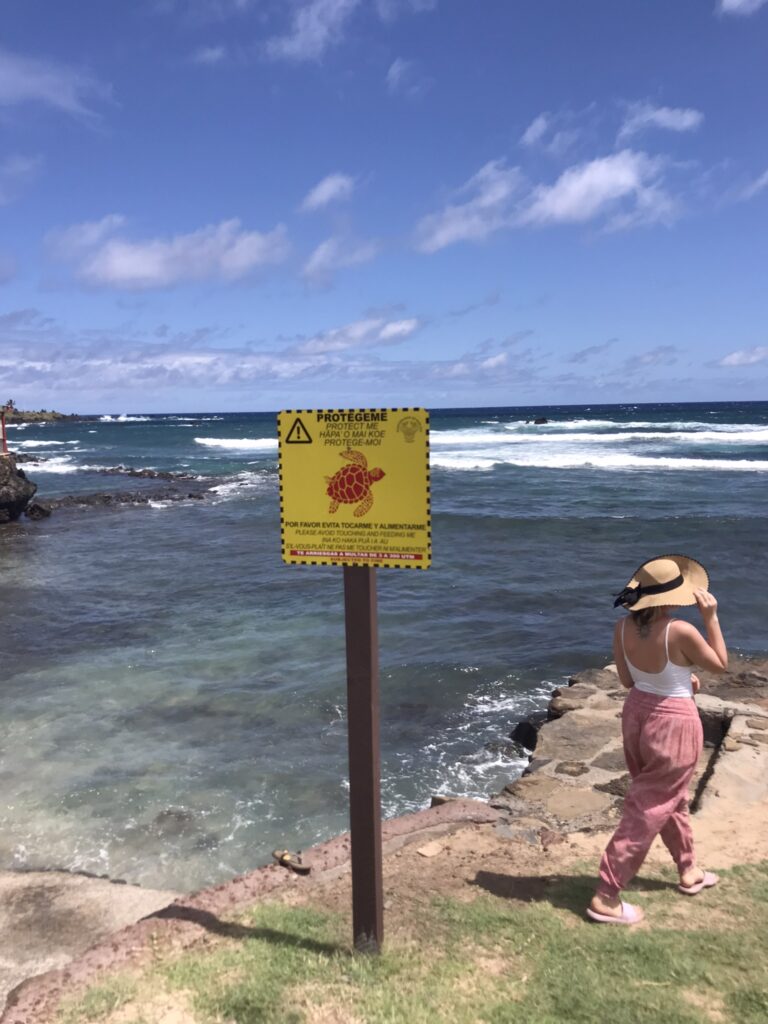
Day 2: Full Day tour with Rapa Nui Travel
We joined a group tour visiting the south coast of the island: we saw examples of non-restored platforms at Ahus Vaihu in the bay of Hanga Te’e, and Akahanga, where supposedly the famous king Hotu Matu ́a was buried. Rano Raraku, the main quarry, where there are 397 moai still lying or standing at the slopes of the extinct volcano. At Rano Raraku you can see how the moai were chiseled from the rock face of the extinct volcano and dragged to numerous final destinations across the island. Moai lie in-situ in various states as if the Rapa Nui craftsmen just downed their tools and abandoned their half-finished creations. Then Ahu Tongariki, where we saw the iconic 15 restored Moais in a line, the most recent and biggest restoration on the island. Tour companies offer a trip to visit Ahu Tongariki at sunrise which includes breakfast, although we didn’t do it, it’s one of the main tourist activities offered. Afterwards we visited the east coast: Ahu Te Pito Kura and the “Navel of the World”. Last but not least Anakena beach with its restored Ahus Nau Nau and Ature Huke. All in all we found this tour to be informative, reasonably priced and good value for money.
Day 3:
Morning: Orongo Half-Day tour with Rapa Nui Travel
Drive up the extinct volcano Rano Kau, appreciate on the way a view over the whole island and see its distinct geological features, proceed to an outlook at the crater lake. Afterwards drive to the ceremonial village of Orongo, where the birdman competition took place and you can see the spectacular petroglyphs related to this culture, enjoy the breath-taking view towards the 3 islets Motu Nui, Motu Iti and Motu Kao Kao opposite the coast. Drive down again to Ahu Vinapu (not restored), the last stop is Ana Kai Tangata cave with paintings. At the moment entrance into the cave is not allowed but we saw the volcanic tunnel that leads to the cave. We enjoyed this short half-day trip although it’s possible to trek to the Rano Kau crater independently without a guide.
Afternoon: We arranged a lift through our hostel to spend the afternoon relaxing at Anakena Beach.
Night: Karikari Cultural Dance Show – we arranged this through our hostel, I thought this might be a tourist trap however I really enjoyed the music, the songs were in the local Rapa Nui language with traditional outfits and dancing. We even got traditional face paint by the performers.
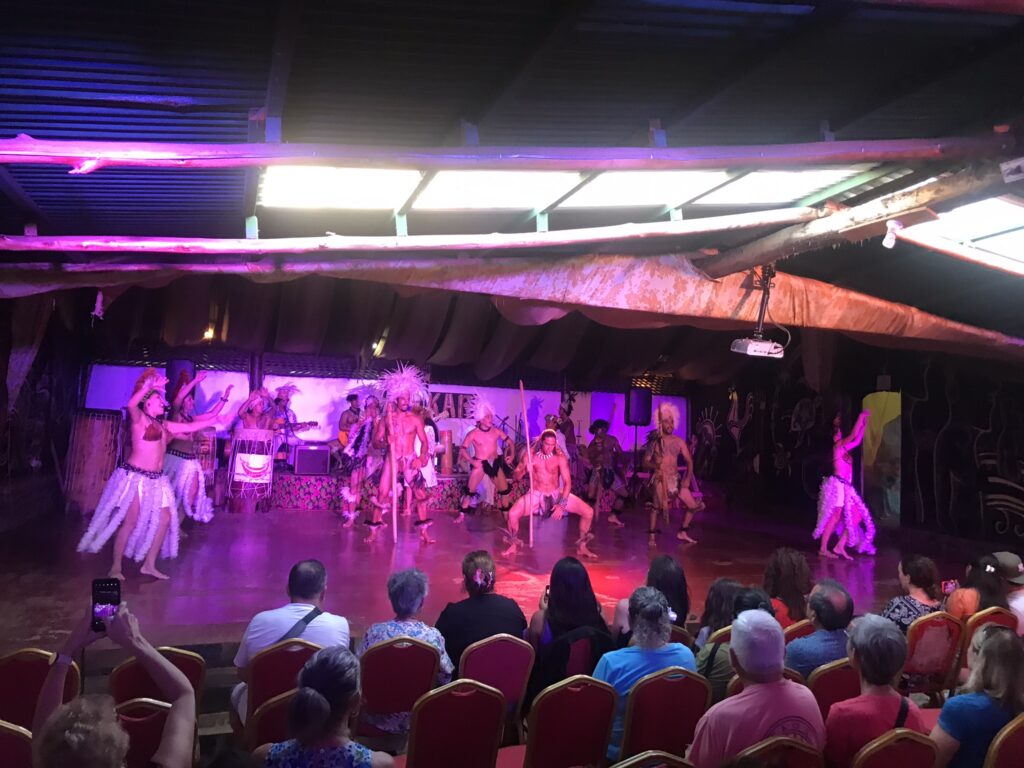
Be prepared to get up on your feet and dance! The karikari experience was memorable, one of the lead male dancers made a young girl cry in the audience.
Day 4: Horse-ride to the north-western edge of the island, great views of the north and west sides of the island. After this take another coastal walk to Ahu Te Peu make the most of your final hours on Easter Island. We combined this walk with a visit to the Rapa Nui museum. We wished we’d visited this museum earlier as it had really thorough explanations of Rapa Nui history and culture. Alternatively, you can visit Ahu Akivi to see the only outward-facing moai on the island.
Day 5: Flight back to Santiago 🙁
For more information and tips on visiting Easter Island independently check out my other blog post here, and for more Chile content click here!
This article is featured on GPSmyCity!
